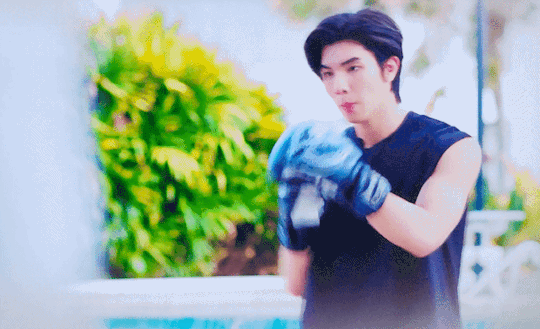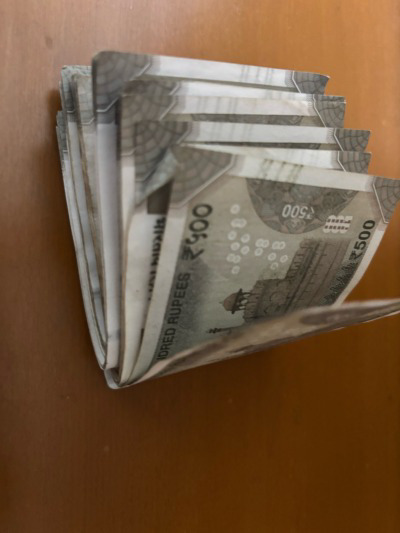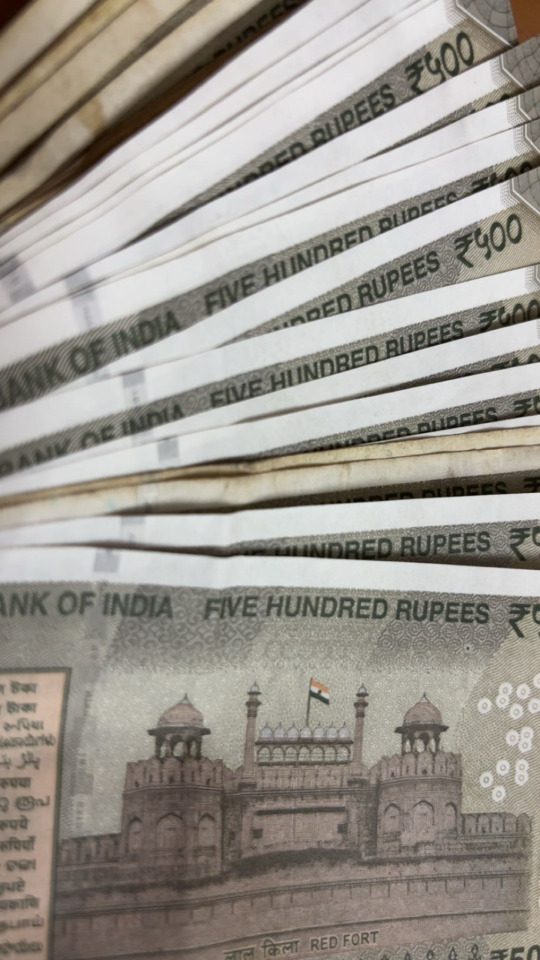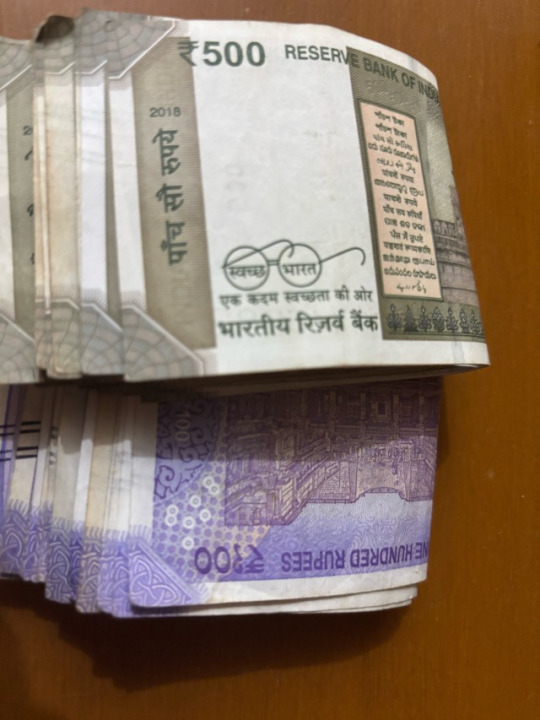#MADE IN THAILAND (SINGAPORE)
Explore tagged Tumblr posts
Text





MCF: MADE IN SINGAPORE/THAILAND
LEE LONG SHI
#MAN CRUSH FANDOM#MADE IN THAILAND (SINGAPORE)#From My Main Blog: BL-BAM-BEYOND#BAM CANDIDATE#SINGAPOREAN/THAI ACTOR#MUAY THAI FIGHTER/TRAINER (FORMER)#My GIFS#MYGIFSET#MY-GIF-EDIT
0 notes
Text

Thailand is known for its thriving and lively LGBT+ community, but did you know that their first Pride Parade took place on Halloween in 1999?
First known as “The Bangkok Gay Festival,” the event was the first of its kind in Thailand. The event, first dubbed a party, was organized by Pakorn Pimton, “who said that after seeing Pride parades on his overseas travels, he wanted Thailand to have one, too” (AP News). The event started as a party, being that there were very few ways to spread news about the event. The news article reports that Pimton mostly relied on posters in gay bars and word of mouth, being that sponsors rejected the event.
Despite the obstacles and only obtaining a permit days before the event, the Bangkok Gay Festival was a success. Drag performers danced on floats, disco music blasted through the streets, and supporters cheered as the community came together. Several sources note that this first Thai LBGT+ event was unique from others due to the lack of political angle: “Pakorn Pimton called it a festival rather than a pride event because of the complete lack of a political angle” (Cambodia Daily).
instagram
Still, the event drew thousands of attendees, including many people from overseas: Hong Kong, Singapore, etc., who could not safely celebrate in their communities. The event also mostly consisted of gay men, but the parade did have some lesbian attendees, who noted that Thai lesbians would have their own parade the following weekend.
Richard Ammon writes, “The ultimate measure of success was not just the cheering and balloons and go-go dancers, but also the long-term impact it had with the media, the authorities and the public” (GlobalGayz).
And the long-term impact was made; the Festival continued to be held for several years. Years later, Ann Waaddao Chumaporn organized "Naruemit Pride 2022" which was held as the country's first official pride parade (BangkokPost). Since then, Waaddao has been an organizer of Bangkok Pride and activist of LGBT+ rights in Thailand, including the push towards marriage equality this past year. We highly recocmmend looking at Waadaao's photo-essays on Bangkok Pride 2022. Read through the above links to learn more about how Pride festivities started in Thailand, and how they’ve evolved since!

🏳️🌈 About Thai X PRIDE 🏳️🌈 FAQ 🏳️🌈 Prompts 🏳️🌈 Discord 🏳️🌈 ThaiFanFests 🏳️🌈
84 notes
·
View notes
Text







New modern chinese BL I'll Turn Back This Time premieres on GagaOOLala on January 11, 2025
Made by the same team that made first uncensored chinese wuxia BL Meet You At The Blossom and has the same actors that played the side couple (Li Yimu as Jinbao and Kou Weilong as Que Siming) in main roles this time
Time: 8:00PM GMT+8
Should have 6 episodes with 50 minute length each.
Premieres internationally with exception of Thailand, Japan and Korea
Actors and filming team from China, filmed in mainland China, made through a production company of Singapore
Synopsis: Shen Nan and Gu Shiwen become step-brothers through their parents' remarriage. As they grow closer, and Gu Shiwen decides to confess his feelings, tragedy strikes. Shen Nan, who travels back in time, tries to change their fate.
Li Yimu as Gu Shiwen, Kou Weilong as Shen Nan
#i'll turn back this time#i will turn back this time#chinese bl#chinese ql#upcoming bl#kou weilong#li yimu#meet you at the blossom#mjtag#tusermona#userjap#mine
176 notes
·
View notes
Text
Bad Buddy 12
My thoughts on Ep 1 | Ep 2 | Ep 3 | Ep 4 | Ep 5 | Ep 6 | Ep 7 | Ep 8 | Ep 9 | Ep 10 | Ep 11
Me, at the end of this episode:

Oh, we have a 4-year time skip!! Interesting.
Pat, where is the Nong Nao doll? I don't see it on your bed. I need answers right now.
I like the transition from Pat putting down his toothbrush to Pran picking up his own. Very clever.
Pran, quick question: WHERE ARE YOU? I see the view in the background, and that's one of Singapore's most iconic buildings, if I'm not wrong, which is definitely not in Thailand. So, boy, what's your ass doing in Singapore?
At least he's still wearing The Watch, so I have hope. Pran's a yearner through and through, so I expected nothing less from him.
We all agree that Max is hitting on Pran, right? Pran's not having any of it, though.
Poor Pat, he doesn't look too happy when Korn and Wai mention revisiting the old days.
Not the fucking elevator flashback 😭😭. Oh no, the curry Pran made for him after he confessed that he liked him. Man, this shit hurts!!
I, for one, am not at all surprised that Pat joined his father's business after graduation. I could've told you that on the day we first met him.
Sidenote, but why are these 22/23-year-olds lamenting about getting old?
Guys, Pa graduated from university and is making a movie!! My baby's all grown up now!! *wipes tears*
Ok, Wai and Korn each have girlfriends. How about instead of saving for individual dowries, you both just ditch the girls and marry each other? Just food for thought.
But why aren't they bringing up Pat's love life? Is it still a touchy topic? I mean, it's been 4 years, and we don't know what reason they gave their friends for the breakup, though, so we shall see.
What do you mean someone else moved into Pran's room? It should've been preserved as a heritage site. Contacting the people at UNESCO ASAP.
Ink and Pa are on my screen together. My boys might be miserable right now, but at least my girls are thriving.
A high school reunion, you say? If I'm not wrong, Pat, Pran, and Ink went to the same high school. Are they going to MEET at the reunion????!
Wow, Ink misses her high school classmates. Definitely can't relate to that sentiment, bestie.
Pat, sir, is that a smile on your face at the possibility of running into Pran at the reunion?
Not Pat looking solemnly at the memory wall.😭😭
THIS IS NOT A DRILL. Pran is here at the reunion!!!
Okay, so just looking longingly at each other is all I'm going to get for now.
"But some things can never change." Pat, bestie, change is the only constant in life. Fuck everything else and go get your man!!
Are you really playing a game at your reunion if the prize up for grabs isn't something like an accommodation voucher for a night at a mid-budget hotel??
Not the trip down memory lane😭. Y'all are in the same room; talk to each other and put yourselves (& me) out of this misery.
A live performance, you say? And PRAN IS SINGING. Now, don't tell me it's the song he wrote to soft launch his feelings to Pat in high school.
Yes, he is. Pat, are you listening? I know you're hearing it, but are you LISTENING to it?
EXCUSE ME! What was that sweet smile you guys just exchanged? I need an explanation!! NOW!!!
A group photo with them being pushed towards each other, which could be a metaphor for the string of fate always bringing them back together. Love to see it.
Pat, let me introduce you to something called a cab. It's really effective in taking your friend's drunk ass home, especially when your ex is giving you THE LOOK!!
Okay, Pat's on the phone with Pa (probably?) and is complaining about being hungry. You know what you should do, Pat? Go to your favorite noodle shop and wait for your ex to show up so that you can talk things through.
WHAT DO YOU MEAN IT'S PRAN ON THE OTHER SIDE OF THE DOOR AND ON THE PHONE??!!! My brain is malfunctioning right now.
"You said you'd sleep at your house." What in the hell is happening right now?
Crisis averted, the Nong Nao doll makes an appearance on the bed.
Okay, Pran, I see you wearing your 'happy hour' shirt while complaining to your boyfriend (?) about Singapore's air pollution.
One thing about them: they are going to use the fucking sponsored makeup remover on the other. It's quite endearing, actually.
BB Product placement stays superior till the end.
I need an explanation, stat!! Are you still mad I didn't pick you up at the airport? What is that boyfriend-ass statement, Pat?
Pran just referred to Pat as his boyfriend. "We've been together for too long."
WHAT DO YOU MEAN THEY NEVER BROKE UP IN THE FIRST PLACE??!!! I need a minute to process this.
My reaction till now, everyone, is the fucking Kuleshov effect in action, with me thinking that both of them are sad because of their 4-year-long separation, when in reality, they are just boyfriends missing each other.

Aww, a memory wall in their home.
Finally, THE GUITAR PICK that Pat made for Pran all those years ago makes an appearance!
So, according to the photos on THE WALL, Pat actually visited Pran in Singapore.
I do hope we get a home tour at some point; I'm really interested in seeing how Pran's OCD self blended his life with Pat's messy ass.
Unknowingly, from two people who couldn't be friends, we became two people who were more than friends.
So, they lied to everyone by saying that they broke up and began Secret relationship 2.0
Not them holding their fucking pinkies together when they pass by in the hallway ASFDGHF—
Time and space are just a construct when it comes to me and my blorbos because remember what I said when they were dating in secrecy the first time? I told them that they should have at least one person they are both familiar with to be in the know about their relationship to maintain a successful secret relationship. And Pran IRREFUTABLY heard me because Wai, Korn, Pa, and Ink knew about them this time around. I bet Einstein didn't foresee this coming.
Aww, they even visited Uncle Tong and Junior after they graduated.
I love that the parents aren't still getting along, because in such cases where the rivalry dates back decades, it feels abnormal to not continue doing so. It's almost like sunk cost fallacy but make it about rivalry.
However, I do love the little detail of Ming having to back off during their car face-off because Ming was the one who stabbed Dissaya in the back, figuratively speaking, all those years ago.
Not Pran rubbing the shirt all over his body to ensure that his scent lasts for a while💀 My boy is an actual menace.
Pat, sir, what are you thinking sending thirst pics to your boyfriend AT WORK?
They even held their pinkies together in their high school reunion photo.
Oh, I'm a happy camper because all my ships are sailing smoothly. The irony of Wai and Korn running the bar (where they used to fight with each other on a regular basis) together is just 😂 😂
Wai and Korn are soft launching their relationship, and no one can tell me otherwise. See, Pat is also a KornWai truther.
Pa, sweetheart, Ink was pining for you since she was in high school. I don't think you need to worry about her straying.
Keep up with shoving your couple photos down everyone's throats, though, just because y'all are hella cute together.
Korn does look like a middle-aged Asian uncle when he is complaining about the rival faculties breaking tables. Oh, how the tables have turned.
Yes, Wai, it's your penance for all the mess you guys used to cause all those years ago.
"Guys, I don't mind if you want to fight, but you must get a lover out of the fight, just like me." STAHP IT
Pran went from ordering three wontons to four—that's how you know he's in a long-term relationship, accommodating your partner without any prodding from their side.
Pran's "I brought your dad a bottle of liquor" is a solid strategy. There is nothing Asian dads love more than receiving imported liquor, even if they don't drink. A sure way to win some brownie points.
Kissing in front of the trashcans!!!! Oh, how far they've come.
Ming once again being the most Asian dad to ever exist by just randomly flipping through the newspaper just to appear busy.
As much as I love to hate on his quintessential Asian dad quirks, he is the most relatable of bl dads for me. Is he perfect? No, but I don't think anyone can say that he doesn't love his son.
Ink is accepted by Pa's parents, which doesn't surprise me one bit because she's perfect. PERIOD.
The dinner scene at Pat's house is a callback to the dinner scene in the initial episodes, when the dad was telling Pat to not let the neighboring boy win at any cost. Oh, how the tables have turned! Now, Pat is trying to curry favor with his dad for the said neighboring boy.
MING TOOK A SIP. Told ya, Asian dads just can't resist imported liquor.
The question of Pran's guitar. Did Pat keep it with him this time around too??!!
Ming crossed the LINE to deliver the mail, and Dissaya saw it.
Awww, his mom put it on his bed, which goes in line with my theory about parallels between Dissaya accepting Pran playing the guitar and him loving Pat. So, I'll be taking this as silent acceptance from her regarding their relationship.
I think both of them are ready to bury the hatchet, TO AN EXTENT, for the sake of their kids happiness.
Going off on a tangent for a bit, but bear with me. Let me take a moment to thank @respectthepetty for training me into thinking of love whenever I see the color pink because, what was the paint color the fathers used to draw the boundary between their houses all those years ago? Yes, it was fucking pink. It means that the answer was love all along. They were MEANT to fall in love to bridge the rift between their families. Talk about 'born to be together,' which was the exact sentiment Pran wanted to convey through The Song in high school.
Now, Pat coming into Pran's room through the window is a clear callback to the time Pat did the same to return the watch after Pran saved Pa. However, then he did it to tell Pran to not act friendly towards him in front of others, and now it's to spend some time with him without hiding from anyone, even their parents.
"If not you, I won't allow anyone else to use it. Pran, when I catch you—
Not Pran, my resident menace, trying to wake up the green-eyed monster by mentioning that Wai may have used it before💀😂
Pran's dad providing the meta commentary with his "This show is just so good." comment.
Ah, forehead kisses, my beloved!!!
Man, the flashbacks to when they were kids overlapping with them right now are just the cutest.
Everyone gather around because I just had a very big-brained thought. Remember, in Ep 8, on the rooftop, Pat wanted to share their relationship with the entire world while Pran asked what's wrong with just wanting to keep it for themselves. What if, whatever happened with their relationship after that, was just exploring both their paths? They clearly tried Pat's way first because Pran cared about him, despite his worry, and it resulted in the Ep 11 ending. After that, they took Pran's way and we all saw how it panned out for them. It might've taken them four years, but their parents are kinda onboard with their relationship.
Now that we're on this subject, let me try to provide some context to Wai pulling down the curtain on their relationship. Not defending his actions, but me thinks it was very intentional that Wai heard Pran say that although he's worried about others finding out about their (Pat & Pran's) relationship, he's willing to take the risk because he cares about Pat more. Wai's vindictive ass heard that and went through his montage of Pran lying to me about his relationship with Pat moments in his head and decided to put Pran's words about caring about Pat more to the test.
We get a post-credit scene? Truly the gift that keeps on giving.
Of course it had to be on a rooftop! Wait a second. Pat's birthday is on 23rd April, and the first time Pat slept over in Pran's room is on 24th April. The psychological implications of it all (for me) can't be overstated!!
Pran, my menace-in-residence, was really showing his horny ass by saying, 'The winner can do anything to the loser.' Never change, bestie!!
Well, I got the house tour I asked for earlier. Fucking Architectural Digest could never.
They shut the door in my face, and I said thank you!!
Honestly, I don't think I've even processed the finale yet. It was very pleasing to my lizard brain, that's for sure. I need to sit with it for a few days, and I'll probably write something about my whole experience liveblogging this BB watch and my thoughts on some of the CHOICES made in the whole series. A sneak peek of few things that are marinating in my head are—
Pat associating Pran with home because he feels lost (I was only half-joking when I compared him to a lost puppy following Pran around).
The air of sadness around Pat that just goes unacknowledged for the most part.
Pran associating Pat with freedom because he feels burdened.
Pran feeling undeserving of Pat's love.
Like I said, I'll be thinking about them a WHOLE LOT.
Quick question: Were there any talks of a season 2? Because there are some easter eggs peppered throughout the series that deserve further exploration, and they definitely have issues they need to address and work through as a couple. This ending will only count as an HFN (happy for now) in my book. I'm putting this ending on par with the To My Star ending, and I adored To My Star 2, so there's that. Still waiting for To My Star 3, though that's a discussion for another day.
One thing I can say for sure is that I'm extremely grateful for the fandom that has welcomed me with open arms and engaged with all my ramblings each episode, because let's be honest, it was just a stream of consciousness.

I wouldn't have had nearly as much fun watching the series without you guys. I'll be camping out on the rooftop for so long that I'll be claiming squatters rights for sure!!!
Tagging the usual suspects: @shortpplfedup, @incandescentflower, @starryalpacasstuff, @7nessasaryevils, @greenteadumplings, @grapejuicegay, @madworld-bbs, @usodeshou, @tao-moonb, @fanatic-freakshow @desi-yearning.
102 notes
·
View notes
Text
So, you lied to me? - Lando Norris x Tourist! Reader
Plot: Going on a travel year you end up in Monaco, the plan wasn't too fall for the man who helped you to the British Embassy and gave you a place to stay when someone stole everything from you ...



You took a gap year before university and decided to travel you'd started off the New Year on a flight from London, to Qatar to New Zealand. You travelled around New Zealand and Australia for the majority of January, before moving on to Papa New Guinea, Fiji and Samoa.
You then travelled round the South Asian countries, like Indonesia, Singapore, Thailand, Vietnam and the Philippines and Taiwan all throughout February. You then moved onto China, doing both Disney Parks while you were there and sight seeing. You did South Korea and Japan.
Coming into April, you moved onto Sri Lanka and India, and The Middle East, doing Dubai, Abu Dhabi, Bahrian, Qatar, Oman and Saudi Arabia.
Afterwards, now having done 2 continents, you moved onto Africa, you spent the end of April and the majority of May travelling here, before leaving for Europe.
A nice 2 weeks island hopping around Greece, before a week travelling up the boot of Italy.
It was when you drove to Monaco in a rental car that things got difficult.
You were walking along the harbor where all the expensive yachts were docked wishing that one could be yours. You didn't have all your bags on you, the larger ones left behind in the hotel room you'd booked for the night. But you had your important stuff on you, like you passport, your drivers license and all your travel documents.
You were taking a picture on your nice Canon camera of the yachts and the street that had weird red corners rounding it that you put down to being measures to just help drivers slow down round the corners, but they were definitely an eyesore.
Every time nice cars drove by there was whistles and claps that made you look at what car it was, you could never tell what model it was but they looked nice and you guess you could say sporty.
As you were distracted taking your pictures a guy comes up to you with a small, parcel cutting knife in his hand. He slit the straps of what you thought was a really sturdy bag and the weight notifies you to the loss of the bag. You let your camera drop as you turn to see the guy now holding your bag and starting to run away with it.
"Hey! Stop" you shout before running after him.
"Aide, Aide" you shout as you continue to follow him, your minimal French not helping as people scold you for being a bustly tourist.
You aren't really looking where you going and you loose him at a busy intersection of people, you spin round looking at every possible direction he could have gone in.
"Shit!" you whisper to yourself quietly tears coming in your eyes. You spin round a little to quickly, bumping into someone who drops the bag that they were holding.
"Désolé, mon erreur" you try looking at the young gentleman you'd bumped into in a hoodie and jeans. He looks at you with a confused look, a smirk coming onto his face.
"Oh sorry, tu ne parles pas français? Maybe Italian, erm fuck scusa, parli italiano?" you ask with again the bare minimum of Italian you know.
"I speak perfectly good English" he smiles, laughing a little as your expression turns to shock.
"Oh! Oh I'm so stupid. Hello!" you smile looking at the very attractive man in front of you, you blushed a little looking up at him.
"You look panicked what's wrong?" he asks.
"I was tacking pictures of the harbor and some guy took my bag. It has everything in of mine and I don't know what to do" You say to him looking a little more panicked.
"Everything as in money ... because I can help with that" he says placing a hand on your arm.
"I don't care about the money, but he has all of my documents. My passport, my drivers license everything" you cry a little.
"Oh! Erm, I have a friend who was born here, and let me get him and he can help us file a police report. Then mmm the British Embassy is all the way in Paris and you cant get a flight so we'll have to drive there..." he starts to rant and your face turned shocked.
"We?" you ask, confused as to how this guy has just inserted himself into your life drama's.
"Oh yeah, I've gotta help you out now. You got that whole damsel in distress thing going on right now! Any way damsel, what's your name?" he jokes and you look over at him offended.
"I am not a damsel in distress! And Y/N" you retort.
"You so are, the tear stains, the wide, helpless eyes, the guppy fish face your pulling right now, the butchered French and Italian to a strange man who actually is British... Y/N" he laughs making you pout and push him a little.
"I don't even have a place to stay after 3pm today and I cant check in anywhere without ID" you say rubbing your head, looking around as if the man would randomly pop back up and hand you your bag back before saying how sorry he was.
"You can stay at my place, I have two spare bedrooms" he smiles and you look at him in shock.
"You live here, in Monaco ..." you ask.
"Yeah, I moved here a few years ago, for ...work" he offers, he phones his friend walking off for a few seconds alone before he pulls you along one of the side streets and too a quiet cafe he went to, to keep under wraps.
"Okay, Y/N this is my friend ... er Percy" he says pointing to Charles, so far you hadn't shown any signs of knowing who he is and he didn't want you to catch wind of that.
"Hello Percy, its nice to meet you" you smile and he looks at you with a vacant yet confused expression.
"Oh and whose this you are beautiful" you compliment looking at the girl behind him.
"Y/N this is my girlfriend Alex" Charles indicates to Alex behind him who smiles and pulls you in for a kind hug that you definitely needed. You could hear both of their strong accents as they introduced himself.
"Oh, I never got you name, what's your name?" you ask turning to look at Lando, who freezes for a second.
"Erm, my names Robert, but you can call me Bob" he smiles and you raise and eyebrow at him.
"Hmmm, you don't look like a Robert... or a Bob. Interesting choice" you voice your opinion making everyone awkwardly laugh.
Charles, Lando and Alex took you to the nearest police station in Monaco, Charles translated what they were saying and you answered to which he and Alex would help translate back.
Charles explained that they were escalating it because you are a tourist in need, but you picked up some words that made the sentence not sound like that at all.
You were asked if you had a place to say and Lando explained you'd be staying with him until everything was sorted out.
The Monegasque police got in contact with the Paris British Embassy for you, they explained that the police had sent over you information and if you wanted to hold off on a new passport for a few days to see if it would turn up you were more than welcome, but right now your passport was on lockdown.
And that was how you ended up spending the end of July and all of August with Lando, it was strange really. For a man who had and extremely nice collection of clothes and a very large apartment he didn't go to work often. There was one room you weren't allowed in which is where he often went, you assumed it was a man cave or gaming room where he played with his friends because you heard lots of shouting and aggressive banging.
He'd been so sweet, he took you on dates from going out to dinner, to picnics, to going swimming and lots more. It felt like more than a summer fling. Especially once he asked you to be his girlfriend, which you immediately said yes too.
But he got a lot more twitchy after he had.
Eventually, Lando or Bob as you knew him took you to Paris so you could get your passport. He explained that he travelled a lot for work and he would need to leave soon and you explained that before you bumped into him you'd been on a gap year travelling the world.
"Baby, why don't you come with me?" he asked randomly as you were both lying on the sofa, cuddling while watching a film.
"You wont even tell me what you do for work Baby! And besides I had a schedule that I'm already behind on. A week ago you said you didn't mind going our separate ways for a little bit until Christmas and then you'd come to England with me" you say playing with his curls.
"Okay, I'm going to be honest with you now... my name isn't Bob" he says shyly and you sit up at the speed of light turning to look at him.
"I knew it! So you lied to me?" you exclaim laughing.
"So, what's my boyfriends actual name?" you ask looking him dead in the eyes, he leans up on his elbows before sitting the full way up.
"Lando, I am Lando Norris" he smiles.
"Hmmmm, Lando... Lando. I could get used to that" you smile.
"You aren't mad?" he asks looking over you, brushing you hair back and tucking it behind your ear before kissing your cheek.
"I knew you weren't being completely honest when we first met... but I also knew you had your own reasons" you offer.
"I think its going to be easier if I just hand you my Instagram" he admits with a gulp as he hands you his phone. The first thing you notice is how many followers he had, there was around 10million and he had nearly 2,500 posts.
You look at the friends list, and one peeks your interest. Charles Leclerc, who looked exactly like Percy who Lando had introduced you too.
You then go back and look at his bio, that told you his actual job.
"So, I'm dating a super famous athlete?" you ask looking up at him away from the phone to see his head down in his hands. He turns to the side to sneak a look at your expression, his eyes a little glossy.
"To be specific, a Formula 1 driver" you ask again and he nods.
"You are such a muppet, my god" you laugh before pulling him into a hug.
"How aren't you upset with me?" he ask unsure.
"Well, I agreed to date you, because you are you. I doubt you change into Mr Hyde when you become a what was is Porsche race-car driver? I fell in love with you, not Bob, not Lando, you. So whether that is Bob, who kindly helped a crying lady on the street who just had her passport stolen from her, or Lando a cool and amazing race-car driver. Whoever you are is the person I love" you grin and he pulls you into a hug.
"So you want to join me for the last few races? Or you want to finish this world trip of yours?" he asks.
"Well, looking at your calendar, I can actually meet you at the rest of the races, While travelling. I'll continue to do Europe until you have the Netherlands, and ill go back to Italy, just for you. I'll miss Azerbaijan and Singapore because I did that, but I'll knock out some of South America, I'll meet you for Austin, then we can do Mexico and Brazil together, then we can do Vegas together! And by that point I can call it done with my trip!" you exclaim and he looks like he considers it for a second.
He's shocked, he cant remember the last time a girlfriend tried so hard to link up their schedules like this, and proved that they'd be able to work despite some potential scheduling issues.
"I love you. I fucking love you" he grins pulling you back down onto the sofa kissing all over your face making you giggle.
A/N: I've been doing a lot of Lando recently, I don't know if you can tell but I love writing about him, he's my fav to write about right now.
Taglist:
@littlesatanicassholebitch @hockey-racing-fubol @laura-naruto-fan1998 @22yuki @simxican @sinofwriting @lewisroscoelove @cmleitora @stupidandunnecessary @clayra-g @daemyratwst @honey-belden @moonypixel @lauralarsen @vader-is-hot @ironcowboycopnickel @itsjustkhaos @the-untamed-soul @beebo86 @happylittlereader @ziejustme @lou-larcher5 @thewulf @purplephantomwolf @chasing-liberosis @chillyleclerc @chanthereader @annoyingmoonballoon @summissss @evieepepi08 @havaneseoger08 @celesteblack08 @gulphulp @fandom1ruined2me @celebstories @starfusionsworld @jspitwall @sierruhh @georgeparisole @dakotatankbig @youcannotcancelquidditch @zzonsbeek @tallbrownhairsarcastic @mellowarcadefun @ourteenagetragedy @otako5811 @countingstacksandpanicattacks @peachiicherries @formulas-bitch @cherry-piee @hopexcroc @mirrorball-6 @spilled-coffee-cup @mehrmonga @bigsimperika @blueberry64857959 @eiraethh @lilypadlover @curseofhecate @alliwantisadonut @the-fem1n1ne-urge @21stcenturytaegi @dark-night-sky-99 @spideybv28 @i-wish-this-was-me @tallrock35 @butterfly-lover @barnestatic @landossainz @darleneslane @barcelonaloverf1life @r0nnsblog @ilove-tswizzle @kapsylia @laneyspaulding19 @viennakarma
#f1 imagine#f1 x reader#formula 1 x you#formula 1#formula one#formula one fanfiction#charles leclerc#lando norris#lando norris x y/n#lando norris imagine#lando imagine#lando x reader#lando#lando norris fanfic#lando norris x reader#mclaren f1#ln4#ln4 imagine#ln4 x reader#ln4 fluff
578 notes
·
View notes
Text
Pond, Phuwin, Gemini, and Fourth: Interview with Esquire Japan [Original Article]
As Thai entertainment is gaining momentum and becoming a global movement dubbed the "T-Wave", Thai actors Pond, Phuwin, Gemini, and Fourth have risen to stardom thanks to their roles in BL dramas. They were also appointed brand ambassadors for Tommy Hilfiger in December 2024 and are attracting more attention in the fashion scene. We had the opportunity to interview them when they came to Japan for "GMMTV FAN FEST 2025 LIVE IN JAPAN". We asked them about the growth of the "T-Wave", their thoughts on it, and their outlook on the future.

The Thai entertainment industry, especially TV dramas, are gaining popularity in Japan. Why do you think that's happening?
Fourth: I think BL dramas have largely contributed to this. They became popular in Thailand, then spread to Japan and other parts of Asia, even to Europe. I feel like another reason for this popularity is that actors hold a lot of fan meetings in different countries. Pond: I think the actors' charisma is another thing that makes [BLs] so popular. I would love for more people in Japan to watch these dramas and I'd love to increase my fanbase here. Gemini: There are a lot of BLs being made, and more and more people in Japan are enjoying them. I also think that T-POP is becoming more and more popular. Phuwin: Japanese anime and manga or K-POP - they all have their own unique characteristics and cannot be replicated. It's difficult to explain in words whether it's the people or the culture, but I think there are many people who enjoy the "Thainess" of it all.

What is the unique appeal of Thai BL dramas?
Fourth: I think the appeal is that they reflect Thai culture in them very well. And I think everything, including the scripts and the character settings, is very diverse. I feel like many viewers love to see people of different backgrounds portrayed equally. Pond: As actors, we don't just study these characters and then act as them, we "become" them. I also think the chemistry that exists between acting pairs is what makes Thai BLs especially appealing. Gemini: We live in a society, where diversity is accepted. I think that Thai BLs are helping some realise that love is not something that can only happen between a man and a woman, and I think that's really resonating with a lot of people. Phuwin: I think Thailand is a very open-minded country in many ways. And while that level of open-mindedness differs from country to country, one of the appeals of our BLs is that they convey the atmosphere of Thailand's free society.

What kind of a person would you ideally like to be when you reach your 30s?
Fourth: I'm studying law while working as an actor. When I turn 30, I want to use what I learned to start a business in another field. Pond: I am slowly getting the chance to do things I couldn't before, so I want to continue working hard. Ideally, I'd like to have a global presence in the entertainment industry by the time I'm in my 30s. Gemini: Maybe I'll start a business, get married, have a family. Or maybe I'll move to another country, like Japan or Singapore, and live there for a while. Phuwin: Before I started my journey in the entertainment industry, I vaguely thought about having a family in my 30s. But I don't have any concrete plans anymore. However, I do want to be a well-spoken, intelligent adult.

Please tell us what you think is the appeal of Tommy Hilfiger and what you are looking forward to as ambassadors.
Fourth: I really like this brand and I love how sporty and cool it is. I'm looking forward to trying on new styles and collections that I've never worn before, and the opportunity to work with celebrities who are also a part of the brand's "family". Especially Felix from Stray Kids. Pond: I think the appeal of the brand is that it's playful but neat. It also caters to a variety of tastes: there are all kinds of clothes, from formal to casual. I would like to convey the brand's message as its ambassador as best as I can while going to events like New York Fashion Week. Gemini: I think it's a brand that has a classic feel but also fits modern times. It's easy to incorporate it into everyday life, and I feel like it suits my lifestyle. I'm looking forward to wearing the new collection, walking the runway, and meeting new people. Phuwin: I think it's a brand that symbolises the freedom of America. We participated in [New York] Fashion Week before and we just want to live up to set expectations as best we can.

What do you think about today's outfit?
Fourth: I feel like it has a Japanese vibe to it, it's different from the way we are styled back in Thailand. Pond: This is the first time I'm trying on this type of style. It's very refreshing and I think it suits all of us. Gemini: Everything is very thought-out and coordinated - not only the clothes, but the shoes as well. Feels very fresh. Phuwin: Like everyone said, the styling is very original and I was excited to wear my outfit.
Archer's Note: The order of questions has been changed, as I wanted to place the more interesting discussions at the beginning. The Tommy Hilfiger questions are the first ones in the original article.
#first time i actually like what they are wearing when it's TH. that's kinda wild. good on the stylist(s)#anyway interesting interesting answers over there. the mind of pond naravit is clearer to me now 🙂↕️#pond naravit#phuwin tangsakyuen#pondphuwin#gemini norawit#fourth nattawat#geminifourth#long post#ppnaravit: interviews#ppnaravit: partner
32 notes
·
View notes
Text
So I shared, the Spanish-language horror visual references in this week’s Peaceful Property episode (which are great ghost story films for comparison in thematic elements, as well). The death this week, though, is yet another ghost story reference, this time in an English-language series with lots of commentary on class and the racial and gender politics of domestic work, The Haunting of Bly Manor.
🚨spoilers for both series from here on🚨


In Bly Manor, Hannah Grose, the estate’s maid is revealed late in the series to be a ghost, who had fallen into a well on the grounds. Although the series is based off Henry James’s Turn of the Screw and its celebrated film adaptation The Innocents from the 1960s and its celebrated 2000s remake The Others* with Nicole Kidman (in which the twist from the previous is that the governess main character is revealed to be dead), Hannah Grose’s death is a new addition in the Netflix series. It compounds the complex themes about class and domestic servitude in the original British story and adds issues of race to the proceedings.
Peaceful Property uses Baanchuen’s story for similar purposes. Migrant domestic work is an important issue in Southeast Asia. The International Labor Organization put out a report last year stating, “29 per cent of surveyed migrant domestic workers in Malaysia were in conditions meeting the ILO’s statistical definition of forced labour; as were 7 per cent of surveyed workers in Singapore and 4 per cent in Thailand. Indicators of involuntariness include not being able to quit your job, having to stay in the job longer than agreed, and being made to work without overtime pay, among others.” Shackles, like those on Baanchuen’s ghost, are an easily recognizable symbol of enslavement, indicating the extent of Aunt Phom’s cruelty.
But even under legal circumstances, domestic workers are one of the least protected group of laborers in Thailand and abroad. Taiwanese-American labor organizer, MacArthur “genius” grant recipient, and mentor/friend to BLM cofounder Alicia Garza, Ai-Jen Poo has a fantastic interview on On Being, in which she discusses the racialized, gendered, international, and cross-class dynamics that define domestic care work, which impacts the strategies to organizing for workers rights in the field.
“The average annual income for a home care worker [presumably in the US at the time of recording in 2020] is $15,000 per year. And I can’t think of any community that I’ve ever lived in where you can survive on $15,000 a year. It’s really quite extraordinary. And they’re there and see employers come home with a pair of shoes that are maybe more than they make in a week, and yet, their job is to care and support and love, and they do so. You can’t actually do your job as a caregiver if you dehumanize the person that is in your charge. And I think that that is so much of what’s needed in this moment. All of us need to understand that we have a profound set of challenges and inequities that we have to deal with and transform, but we have to do it with a boundless sense of compassion and humanity.”
I’d encourage some of my fellow watchers of Peaceful Property to heed Poo’s perspective on disrupting class distinctions and what the advocacy for equitable practices has looked like in her work. I’m a caseworker myself and have worked alongside people who had less privilege than me for caring wealthy people who never the less didn’t always recognize the value of those whose work they depended on and didn’t have the labor laws that might provide that guidance. There are a few pieces of work that explore this meaningfully (better than The Help, although Viola Davis and Octavia Spencer absolutely carved out depths in their characters stories that weren’t there on the page). Glad to see Peaceful Property making its attempt to explore these depths. It actually made me reflect on how many of the jobs after the first episode really focused on gendered aspects of labor—a wig-maker, assistants, food-making…
And for my Homepeach truthers out there, that gender conversation is not just about labor. Bly Manor is also notable for its queer romance storyline with a wealthier character running from her internalized homophobia/guilt after a car accident…
*Incidentally, The Others is also heavily influenced by the same Spanish film, The Spirit of the Beehive, as both referenced Spanish-language horror films in these weeks episode.
#peaceful property#peaceful property the series#on sale the series#peachhome#thai bl#gmmtv#the haunting of bly manor#bly manor#meta
30 notes
·
View notes
Text
names for my 2ps
hi I’m bored uh idk I’m gonna list out the names of the 2ps of my universe
the ones in italic my gf came up with, some are just the popular fanon names
not including countries I don’t have names for
2p Italy - Luciano Vargas
2p Germany - Luther Beilschidmt
2p Japan - Kuro Honda
2p America - Allen Fitzgerald Jones
2p England - Rochester Kirkland
2p France - Absolon, but I use Jacques Bonnefoy. I might switch between the two sometimes
2p Russia - Nicholas Braginsky
2p Canada - James Williams
2p Romano - Nero Vargas
2p Spain - Caín Hernández Carriedo
2p Switzerland - Koloman Zwingli
2p Liechtenstein - Adalaide Zwingli
2p Lithuania - Kęstutis Laurinaitis
2p Estonia - Maksim von Bock
2p Latvia - Aleksandr Galante
2p Poland - Czesław Łukasiewicz
2p Turkey - Selim Adnan
2p Philippines - Ramil Rizal
2p Thailand - Atid Charoensuk
2p Indonesia - Kebanggaan
2p Malaysia - Mahathir Kirkland
2p Singapore - Taufik Kuan Yew
2p Rome - Remus Vargas
2p Nyo Rome - Agrippina Vargas
2p Ancient Egypt - Amunet Hassan
2p Ancient Greece - Eris Aetos
2p Germania - Adalhard Beilschidmt
tbh for the SEAsians I seriously doubt I’ll really give them much attention like the other ones 😭😭😭 I’m so sorry they are just not my favourite characters and I know shit about them. They do have cards made by my gf so um if you wanna see those idk please do tell me
I have very obvious favourites you’ll find out soon I’m sorry guys 😭😭😭 I’ll make a list of names for my ancients next idk
#hetalia#2p hetalia#2ptalia#jojo’s 2ptalia#2p america#2p england#2p italy#2p north italy#2p romano#2p canada#2p japan#2p russia#2p rome#2p ancient egypt#2p ancient greece#2p germania#2p germany#aph jojo rambling#2p philippines#2p thailand#2p Indonesia#2p malaysia#2p singapore#2p poland#2p Lithuania#2p estonia#2p latvia#2p spain#2p switzerland#2p Liechtenstein
47 notes
·
View notes
Text
Join the challenge with me! I will make sure you get 100$
Hello everyone! It’s nice that so many people have believed in me and seen my success stories + proofs which i have shown it to you (if your new go check it!) your kind words and hope made me want to do this challenge with you guys!
Let me tell you that i have never done a challenge with people but i did join the challenges! So i want to do it my way!
If you have seen my proofs you can see i have manifested money! And i tell you that i am actually good at manifesting money…
I want to make sure that you will get it within 7 days maximum! Since it’s my first time doing this challenge i will make sure i will do my best and make you get it! And i will also do this challenge!
RULES:
When you join this challenge make sure in this 7 days you will listen to me and do these every steps without fail! I will give you instruction on what to do on each day!
If your joining my challenge comment below with an emoji saying i am joining this challenge and i will put your emoji’s in this post
If your telling me this does not work blah blah blah i still want you to persist no matter what because if i want something to happen it should happen! No excuses
When will i post?
🇮🇳 IST (India) — 3:00 PM
🇦🇪 GST (UAE) — 1:30 PM
🇬🇧 BST (UK) — 10:30 AM
🌍 GMT — 9:30 AM
🇫🇷 CEST (France/Germany) — 11:30 AM
🇷🇺 MSK (Moscow) — 12:30 PM
🇹🇭 ICT (Thailand) — 4:30 PM
🇸🇬 SGT (Singapore) — 5:30 PM
🇨🇳 CST (China) — 5:30 PM
🇯🇵 JST (Japan) — 6:30 PM
🇦🇺 AEST (Australia) — 7:30 PM
🇳🇿 NZST (New Zealand) — 9:30 PM
🇺🇸 EDT (New York) — 5:30 AM
🇺🇸 CDT (Chicago) — 4:30 AM
🇺🇸 PDT (California) — 2:30 AM
If you’re joining this challenge make sure you prepare yourself and be ready to do this challenge with me! I will see you tomorrow next 3:00 pm where my challenge for day 1 post will be given to you
Proof of me manifesting:



#neville goddard#loa success#manifestation#loa#the void state#void success#vaunts & affirmations#void state#law of assumption#anon asks
15 notes
·
View notes
Note
Can u pls tell me ur head anon age for all the Asians?(it is very confusing-like,some people hc India to be old while in canon China is the oldest-the ONLY Ancient left)
AAAAAAAAA I'M FINALLY BACK😭SORRY IT TOOK ME THIS LONG TO ANSWER I WAS SO BUSYAHHEHWHA
(~AS ALWAYSS if ever I made any mistakes on my headcanons, kindly let me know. Credits to Hima)
Also, I'm also gonna try to estimate their human or like physical ages, tooo (these are just my headcanons thoo)
China: Yes, defo the oldest!! He's very much stated to be about 4,000 years old and probably has been around at the same time as the other ancient nations. And bcs of that, I can see him to be around physically in his early thirties at most. Physically thirty with a baby face.
India: Yeahh he's old tooo, but not 'ancient old' thoo. The Indus Valley civilization from 3300 BCE is a great way to anchor India's 'oldness' but a more unified Indian cultural persona came around later on, which was like about 2,000-3,000 years agoo (this reallyy solidified his persona). And I bet he's physically around his late twenties to early thirties.
Japan: Another oldie but a younger oldie!! About 2,000 years old, making him younger that the previous two. Which would make sense since he was in a chibi form when he first met China. Physically tho, I can sense mid-twenties energy from him:)
Korea: VERY VERY long dynastic history, but in doing human ages I always consider the national idenityy. That makes Korea probably around 1,500-1,700 years old. He's canonically 15-16, but if you don't mind, I see him in the range of 18/19/20 human years.
Macau: His history is rlly interesting, I'll tell you that. As someone younger, WAYY younger than the mainland, I'd say he's probably 400-500 years old. His identity really solidified during the 16th century when he became a Portuguese trading hub. And for his physical age...can he be twenty...?
Indonesia: Yess around 1,500-2,000 years old (from Srivijaya, Majapahit, and older cultural lines)!! For his physical age, 19-20 age range seems fitting right:')
Malaysia: Let's say he's 'born' around the Srivijaya eraa, that makes him around 1,400 years old. And his profile states that he could be an adult, so maybe around 18-19 physically.
Philippines: I'm counting the Butuan/Tondo civilization heree, that makes him around 1,100-1,200 years old. Physical wise, I've always seen him to be in the same age range as Malaysiaa, so 18-19 it is!!
Taiwan: While Austronesian settlement emerged in Taiwan 6,000 years ago. However, if we anchor Taiwan's colonial period to be our starting point, that will make her about 400 years old. Physically, however, I agree with the usual portrayal of her being 17:))
Singapore: I think I've already mentioned Temasek (a modest fishing port that Stamford Raffles later on renames as Singapore) before in my older posts, so I wanted to mention it here again. And Temasek is from the 1300's, making Singapore about 700 years old. And physically, I bet he's probably the same human age as Taiwan, so 17
Hong Kong: It's canon that HK is not a 'baby' under the British reign, in fact by the looks of it, I estimate him to be in his teenage years physically. However, it's also official (I think...) that he grew up under China. STILL, it's only historically accurate to say that he's about 200 years old today, counting from the 1800's. Physically, I just really do see him as physically the youngest of the bunch- So, he's 16-17 in my hccc
Thailand: If I'm counting the Dvaravati and the old Tai migrations, that would make him around 2,000 years old!! Physically, I think I read it somewhere that he's about 21-22 and ran with it.
Vietnam: LAST BUT NOT THE LEASTT!! In my headcanon, Viet was a part and emerged from the Hồng Bàng era, making her 3,000 years old (legendary). For her physical age, I can see her as someone in her 20s. Probably like 22/23 or so.
There's actually so so much more lore to uncover, this post is just an overview of it
BUT if you guys do want to see more content like this, my inbox is always open!!
~Brie💌
#hetalia#hetalia axis powers#hetalia world stars#aph-asiapacific#aph china#aph hong kong#aph malaysia#aph korea#aph taiwan#aph india#aph philippines#aph thailand#aph vietnam#aph indonesia#aph macau#aph singapore#aph japan#hws china#hws hong kong#hws malaysia#Hws korea#hws taiwan#hws india#hws philippines#hws thailand#hws vietnam#hws indonesia#hws macau#hws singapore#historical hetalia
14 notes
·
View notes
Text
summer: iceland -> france -> italy -> spain -> ireland -> scotland. winter: thailand/malaysia/vietnam/cambodia/singapore. then japan. spring: india, specifically not mumbai/goa again but rajasthan, jaipur, new dehli. then...world is ur oyster fr, made a whole list gonna keep going..
#words cannot express. saved up for so long. 4 jobs at one point. can get all the money back on that doctor money soon enuff but never time..#🙏🙏#k
14 notes
·
View notes
Text
𝙃𝙄𝘼𝙏𝙐𝙎


HER LAST APPEARANCE (2016.07.23)
her 3rd mini album was released in March 2016, after Super Junior's 10th anniversary tour
see more about the album HERE
after touring Asia, visiting Japan, China, Taiwan, Thailand and Singapore, between March and July
the last concert was in Korea
a fancon
and she didn't say it would be the last fancon before going on hiatus
simply that it would be the last of the season
and, oddly enough, the news remained a secret
she sang some famous Super Junior songs
some of her own
all the songs from the 3rd mini album
and, while interacting with the fans, she made a lot of jokes
people were laughing a lot
then, suddenly, she sang the last song
to close the show
it wasn't a song the audience knew
she began in a comedic tone, playing with the voice modulator and making jokes about events in the entertainment industry
she used funny metaphors to talk about real problems she has
about having had panic attacks the last few times she performed
and anxiety attacks at the thought of singing or going into a studio
she said “The truth is, my biggest problem is you” because she wanted her fans to always get the best, but she wanted to be able to do the things that she likes
she was afraid of the company, of being attacked again, of being humiliated by the media and she loves her fans but hates them at the same time and...
it was all too much
tears appeared on her face and she cried a little on stage, before continuing the song
staffs asked if she wanted to stop performing but she didn’t
she didn’t care if she looked ugly crying or if the make up was going to fade away
“look at them, they're just staring at me. Like, come and watch the fat whore with a steadily declining mental health and laugh as she attempts to give you what she cannot give herself”
some fans praised her courage for bringing up the subject and being so honest
haters said that she didn't have a hard job to be sad like that, that there was nothing to empathize with
that if she couldn't handle it, she should retire, there were better and prettier aidols
she didn't see any of these comments as she deleted all her social media the next morning
her contract with SM expired in August and was not renewed
she didn't sign with any other company and didn't make any public appearances until 2019

WHAT DID SHE DO WHILE ON HIATUS?
turned into a gallery curator in 2017, because she liked art and couldn’t just live in a sabbatical year forever
she doesn't like sitting around doing nothing
my girl is too creative and art inspired for that
friends and other artists knew what she was doing and which gallery it was, but the public didn't
even dispatch and other media chose to keep this private
she read a lot… and i mean A LOT
different types of books but she really took a liking to phylosophers, anthropologists and classical theorists from different types
Super Junior members couldn’t believe this
wasn’t she the girl who almost didn’t graduate from high school because she used to skip class just to train?
really a turn of events
she started college again in 2019, finally graduating in Anthropology with plus degree in Linguistics in 2023
and, in the meantime, people took time to understnand her album and they agreed that they would never find someone like her — as stated in her song
so fans asked her to come back
not in a “I want a comeback” way
but in a much more mature fandom that realized they needed to grew as people
they discussed so much in the forums
and even people who wrote articles about her realized how they needed to be different
college had given her much more creativity and world perspective
one of the reasons she got back from the hiatus
and the ELFs, oh, she has always been very grateful to them
it was only because of them that she could really sing in the group
so she decided to come back in the end of 2019
#kpop oc#sm entertainment#super junior#super junior 14th member au#super junior 16th member au#super junior imagine#super junior reactions#super junior imagines#super junior x reader#bo burnham
7 notes
·
View notes
Text
2024: the year when chinese queer media broke through
13+ chinese QLs get released:
BL The Spirealm (c) Meet You At The Blossom Blue Canvas of Youthful Days
short BL: Be Moon Meet Unexpectedly Gym Affairs Inverse Identity Uncle Unknown Player10 My School Exclusive Bully Boyfriend (c) GL: Soul Sisters (c)
short GL: I’ve Been Dreaming of You for a Long Time (Xiao Xiang Yi Jiu) My Hot Butch Roommate
4 QL shows with chinese wuxia/xianxia elements air:
Meet You At The Blossom Century of Love 🇹🇭 Battle of the Writers 🇹🇭 Soul Sisters
6 BLs get adapted from chinese novels by other countries and are released:
Unknown 🇹🇼 My Stand-In 🇹🇭 Battle of the Writers 🇹🇭 Addicted Heroin 🇹🇭 The On1y One 🇹🇼 Secret Love 🇹🇭
Lightly censored chinese horror-mystery BL The Spirealm gets released (leaked?) unannounced on iQIYI in February and pulled in less than 2 hours. Fans download it in time, upload and spread it online. The show is brought back to streaming through international platforms in April.
First ever uncensored chinese wuxia BL Meet You At The Blossom gets released internationally through a loophole: it was made by a thai production company, but kept chinese cast, filming team and styling team, and was filmed in mainland China. Despite receiving threats from censors, it is not taken down. Has kisses, sex scenes and a happy ending.
Leads of Meet You At The Blossom Li Le and Wang Yunkai become the first-ever branded chinese BL pair, get product brand deals, magazine covers, hold 7+ fanmeetings together in Thailand, Hong Kong and mainland China.
Lekai’s costars Kou Weilong and Li Yimu follow in their footsteps, become a branded pair, and star in another uncensored BL I'll Turn Back This Time (2025), made by the same team that worked on Meet You At The Blossom.
Uncensored modern chinese BL Blue Canvas of Youthful Days has its first episodes released in August on iQIYI. Because of mass reporting, it is removed after 4 hours. Comes back on international platforms in October. Has kisses and a happy ending.
Thai BL Battle of the Writers (adapted from a chinese novel) has wuxia scenes that were filmed in mainland China. The show has romantic and explicit sex scenes while in wuxia costuming.
First ever full-length chinese wuxia GL Soul Sisters airs, is lightly censored and has a happy ending.
15+ chinese QLs are announced for 2025, most of them uncensored:
Love and Punishment The Mountains and Rivers are Forever Silent City of the Sun Again 18 Chasing Ghost (c?)
Including upcoming adaptations of chinese novels by other countries:
Fake Slackers Beloved Enemy Sammy’s Children’s Day
and dramas that started filming or finished filming in 2024 ⬇️
7+ chinese QLs finished filming or were filming by the end of the year and were waiting to be released:
Old Days in the Middle of Summer The General's Son (c?) Desire (omegaverse, advertised to have mpreg) Caged Bird (aired February 2025) I'll Turn Back This Time (aired January 2025) Fireworks of Yesteryear (GL, aired January 2025) Who Knows Girls L or WKGL (GL, aired January 2025)
10+ completed censored chinese BLs that were frozen by censors are still waiting to be released:
Eternal Faith (January 15, 2022) Immortality (September 23, 2020) Winner is King (November 13, 2020) Guardians of the Lands (July 17, 2021) Chasing the Light (July 10, 2021) The Wanderers (June 21, 2021) The Story of the Bat (March 28, 2021) Dreamcatcher/Duo Meng (May 25, 2021) In Darkness (March 5, 2021) Justice in the Dark (! remaining episodes will air on March 7 through a japanese streaming platform)
Collaborations are the solution. Countries that assisted chinese QL industry in 2024:
Thailand 🇹🇭
1 CBL production 1 streaming pick-up 4 adaptations at least 2 upcoming CBL productions at least 2 upcoming adaptations
Taiwan 🇹🇼
2 CBL productions 2 streaming pick-ups 2 adaptations at least 2 upcoming CBL productions
Japan 🇯🇵
1 CBL production 3 streaming pickups 1 upcoming streaming pickup
Singapore 🇸🇬
1 CBL production
Support and uplift chinese queer creators and their fight. There is hope for an even better tomorrow.
46 notes
·
View notes
Text
Another Ask Blog List
At this point a lot of characters are taken, but there's nothing wrong with a few doubles for the sake of options.
Some people might only want to interact with blogs run by adults, and some minors might feel more comfortable with fellow minors, or some people might just like certain portrayals more than others.
So I've made a list of taken characters and how many (active) blogs I've seen roleplaying them in case people want to try playing a character who doesn't have as many blogs.
Each asterisk represents a blog.
Lithuania (1p)*
China (nyo)*
Greece (1p)*
Ancient Greece (1p)*
Belarus (1p)*
Australia (1p)*
Rome (1p)*
Seychelles (1p)*
Poland (1p)*
Liechtenstein (1p)*
Philippines (1p)*
Thailand (1p)*
Germania (1p)*
Macau (1p)*
Spain (1p)*
Indonesia (1p)*
Czech (1p)*
Kugelmugel (1p)*
Creatures (1p)*
Wy (1p)*
Luxembourg (1p)*
Persia (1p)*
New Zealand (1p)*
Netherlands (1p)*
Cyprus (1p)*
Estonia (1p)*
Latvia (1p)*
Iceland (1p)*
Norway (1p)*
Sweden (1p)*
Finland (1p)*
Hungary (1p)*
Egypt (1p)*
Ireland (1p)*
Hong Kong (1p)*
South Korea (1p)*
Monaco (1p)*
Knights Templar (1p)*
Japan (1p)**
Austria (1p)**
Denmark (1p)** (nyo)*
Romano (1p)**
Germany (1p)** (2p)*
Singapore (1p)**
France (1p)** (2p)*
Canada (1p)** (2p)*
Prussia (1p)****
Russia (1p)*** (18th cent.)* (child)*
England (1p)** (nyo)** (AU)*
Italy (1p)*** (risorgimento)* (child)* (2p)*
America (1p)** (2p)** (AU)***** (nyo)*
_______
In my conclusion, we have a good amount of America, Italy, England, Russia, and Prussia blogs for right now and it'd be nice to see more variety for other characters!
(Apologies if I missed anything. It's hard to keep track of every ask blog, and I tried to avoid counting those that didn't seem active)
#hetalia#hws#aph#ask blog#roleplay blog#rp blog#hws Lithuania#hws japan#hws greece#hws china#hws india#hws rome#hws romano#hws france#nyo#nyotalia
11 notes
·
View notes
Text
₊˚⊹♡ touch is the first english single by honeylemon. it was released on january 10 , 2025 , through seventh heaven and republic records. the song is credited as being composed and produced by in–house producer lee baekho , with lyric credits going to both baekho and kenzie. the members are currently promoting the single in the u.s. // formatting inspired by @hjnxx <𝟑 .ᐟ
following the release of their fifth mini–album , cherry bomb in november of 2024 , honeylemon's management announced plans to release their first official english single in january. they began posting photo teasers on december 29 , and the song was officially released on january 10. an accompanying music video was uploaded to youtube simultaneously with the single's release , portraying the members as sad and lovelorn before they regain their confidence and move on. currently , the music video sits at 10 million views.
to promote the song , the group performed on american talk shows like the tonight show starring jimmy fallon , good morning america , and the kelly clarkson show , as well as mtv fresh out live. they also did two performances on korean music programs , inkigayo and show! music core , and won five trophies.
while in los angeles and new york , they sat courtside at a lakers game and the lakers girls performed 'touch'. they also collaborated with social media personalities the sturniolo triplets for a video and took a friendship test for buzzfeed , answered their most googled questions for wired , and played a game of 'most likely to...' for variety. these appearances made for plenty of viral moments online , especially on tiktok , with kenzie being the most talked–about member for her looks and sense of humor.
'touch' was a commercial success , peaking at #1 on the circle digital chart for six non–consecutive weeks , #5 on the billboard global 200 , and #24 on the billboard hot 100. it also reached #1 in hong kong , singapore , thailand , malaysia , and japan , as well as the top ten in india and new zealand.
critically , however , responses were mixed. one critic wrote that the song was a jarring downgrade from the boldness and production of the group's previous comeback , "2 spicy" , and gave it two out of five stars in a negative review. meanwhile others wrote about it positively , one calling it a "dreamy and infectious dancepop bop".
#* ⠀ ── ⠀ honeylemon ⠀ 、 ⠀ dev ⠀ !#* ⠀ ── ⠀ honeylemon ⠀ 、 ⠀ disc ⠀ !#fictional idol community#idol oc#kpop oc#fake kpop group#fictional idol group#nov cb is the friends we made along the way#i'll post it eventually i swear i just cant bring myself to rn bc i think its ugly 💀#so have this for now
11 notes
·
View notes
Text
Two upcoming new My Little Pony fruit juice drinks by Kato & Kukuru.


Kato & Kukuru is a brand for yogurts and fruit juice drinks with Nata de Coco in them. Their two new MLP themed juice flavors will be of Pink Lemonade and Lychee.
These are made by the Singaporean company YLF. It manufactures and distributes sweet treats and toys all throughout Singapore, Malaysia, and Thailand. They have made many treats for My Little Pony in the past for both generations 4 and 5.
#my little pony#mlp g5#mlp#mlp merch#sunny starscout#hitch trailblazer#izzy moonbow#pipp petals#zipp storm#singapore#malaysia#thailand
22 notes
·
View notes